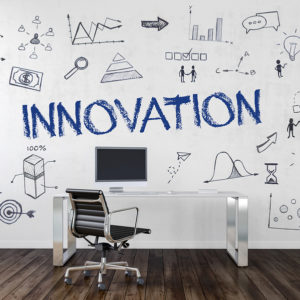The coronavirus has sufficiently disrupted life that it has our closest attention. And the private sector’s response — initiative, innovation and intrepidity — is inspirational.
Private-sector medical research-and-development innovators, such as biopharmaceutical companies and clinical labs, are working nonstop to discover diagnostics, therapeutics, vaccines and cures.
Medical device companies are making medical products of all sorts that are running in short supply and creating new devices for this unique situation.
Healthcare providers — hospitals, clinics, doctors, nurses — are screening and treating people potentially or actually infected with the virus.
Various manufacturers, food companies and other businesses are retooling factories and reorienting facilities to add capacity and to mass-produce badly needed supplies and essential goods. And don’t overlook digital apps, delivery services, truckers, first responders, grocers and others filling necessary roles we usually take for granted.
At times like these, we do well to take stock of fundamental assets that enable America not only to survive but to thrive amid challenges. These assets include limited government, a republic, private property rights, the rule of law, due process, a free-market economy and popular sovereignty. And sometimes underappreciated as an asset is innovation.
With the coronavirus at hand, medical innovation is the focus. To be sure, we won’t overcome COVID-19 without innovation.
American innovation isn’t limited to medicine. And it doesn’t occur in a vacuum. It’s built on the foundation of secure, reliable, enforceable private intellectual property rights in rules-based IP and legal systems.
Let’s define “innovation.” Here, innovation refers to discovering and developing something that’s new or improves on or adapts something in existence. It includes things both milestone-setting (new, even monumental) and iterative (improvements, complementary).
While mobile apps, advertising-based internet platforms, etc., involve a level of innovation, they essentially implement things that ride on the core technologies that research-and-development firms have invented. They’re the locomotives that run on the infrastructure. And such implementers don’t necessarily rely on patents and exclusivity.
The “disruptive” innovators in various industrial sectors and technological areas are very often those whose inventions vie for and set industry standards.
A good example in wireless communications is Qualcomm, whose standard-setting technologies in earlier and current wireless generations has, among other things, helped make the “app economy” possible. Qualcomm’s now engaged in 5G standards processes, its foundational technology already being adopted.
Inventors assume tremendous financial and other risks. They experience many failures along the road to success — remember Thomas Edison’s “1 percent inspiration, 99 percent perspiration” formula. Trial and error is a given for innovators. Dead ends come with the territory of innovation.
U.S. innovators devote millions and millions of private dollars to research and development. Some of these investments go into applied research geared to commercializing basic research discoveries, such as a university lab’s discovery that a certain enzyme correlates with a certain disease or the invention of an advanced material with many practical applications.
As a Massachusetts Institute of Technology engineering student, Rep. Thomas Massie, (R-Ky.), invented computer-based haptic software and hardware that uses one’s sense of touch to advance virtual reality. Massie, who has 30 patents, founded SensAble Technologies Inc., licensing and commercializing initial patents from MIT. His IP-based startup created 70 jobs, and his technology is used widely in computer-assisted design.
Private property rights undergird the R&D business model and IP-intensive sectors of our economy. Certain industry sectors lead in innovation because patents, trade secrets and other IP secure innovators’ property rights to their inventions and creations.
InterDigital is an R&D firm in digital wireless and video communication technologies. The company is credited with more than 4,000 contributions to wireless standards, including 5G, through InterDigital’s involvement in principal standard-setting organizations.
The innovator’s success stems from its inventing and licensing its patents — a well-established path to success and serial innovation.
The right of exclusivity that IP provides innovators is critical to developing and commercializing cutting-edge inventions in materials science, artificial intelligence, advanced manufacturing, aeronautics, energy, quantum computing and other sophisticated fields.
Pivotal Commware is another example of innovation in the 5G space. This spinoff from Intellectual Ventures’ lab has recently seen its beam modeling specifications adopted by leading 5G standards bodies, 3GPP and ORAN.
Pivotal’s metamaterials invention, Holographic Beam Forming, allows network operators to optimize their networks to maximize coverage, throughput and capacity.
Inventors learn from other inventors’ patents and invent new or improved devices, methods, processes, designs, software functions, etc. This may lead to new markets, new wealth and consumer benefits.
Thus, innovation coupled with secure, enforceable IP drives dynamic competition — entire industries spring up; competitors enter newly created markets; startups, jobs, products, wealth, and replenished R&D funds result. All improve quality of life while growing the economic pie.
If America is to come through the coronavirus and its vast economic destruction successfully, we must acknowledge innovation as a national treasure, an asset to be guarded and fostered through other assets such as private property rights and rule of law.
High-value inventions aren’t commodities. They’re dynamos powering new markets, new competition, new wealth and new opportunities.

